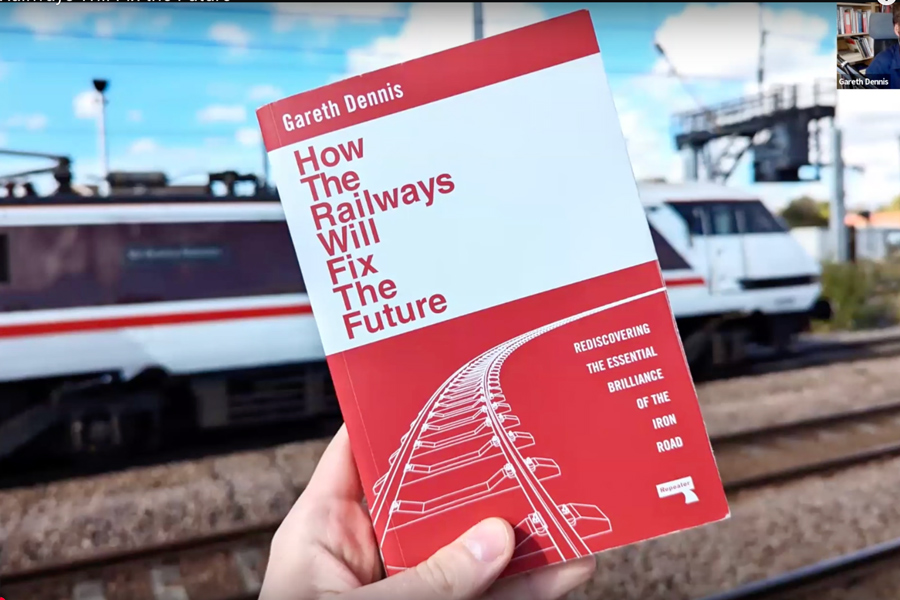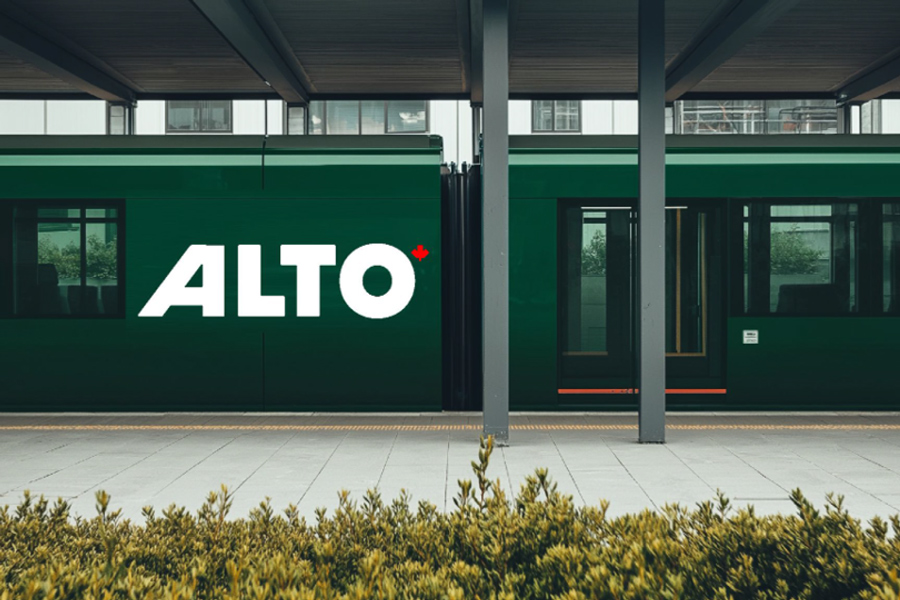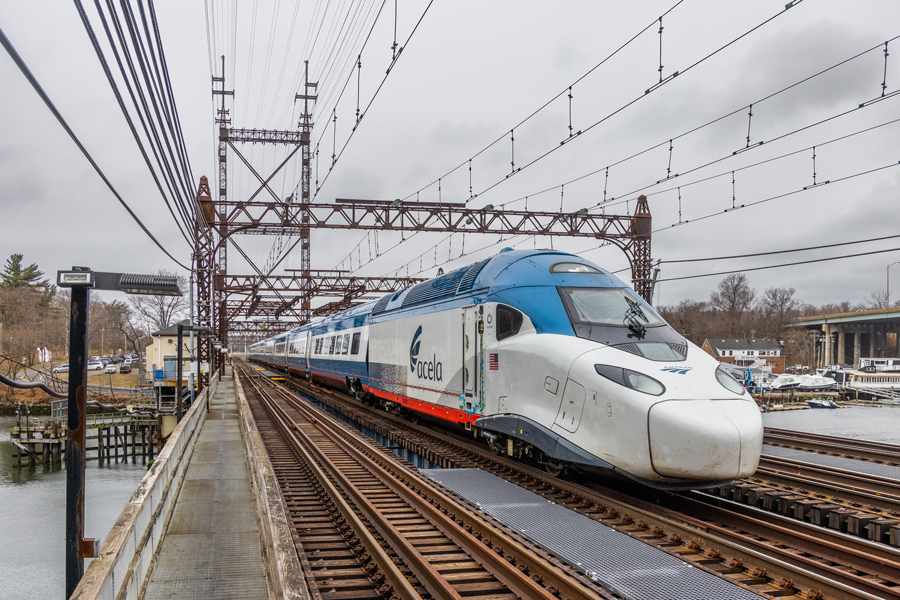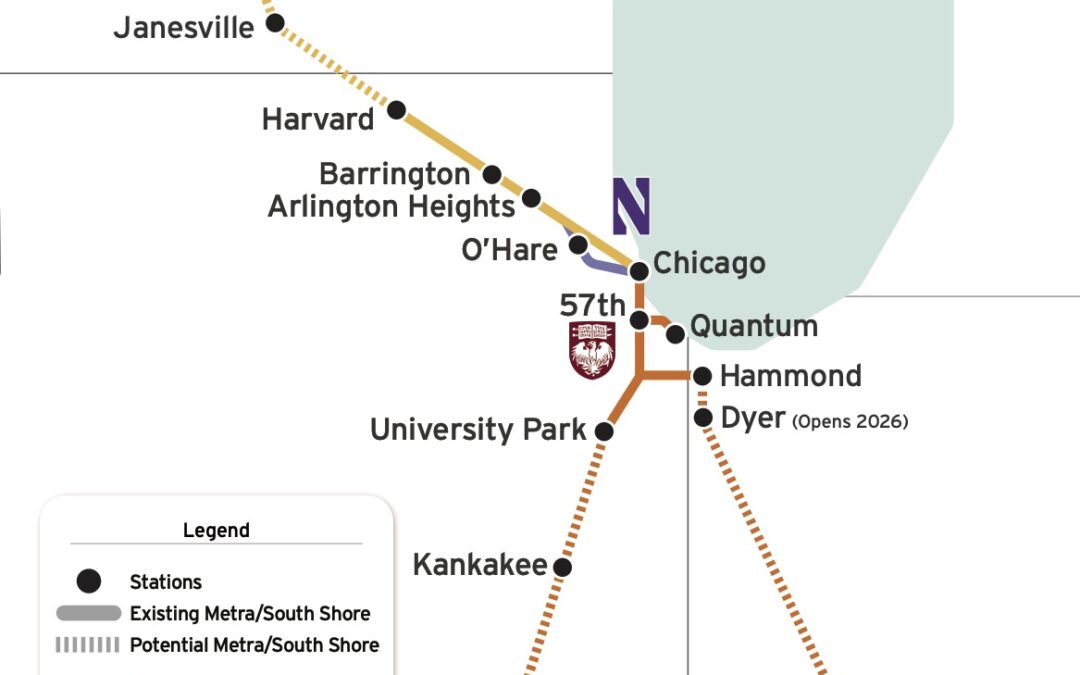All systems go for new high-speed line connecting Quebec City, Montreal, Toronto—and someday Chicago? A high-speed rail project that will link Toronto with Quebec City—known as Alto—is moving forward. At the organization’s annual meeting on Thursday, CEO Martin...
Trains are the “one big powerful tool” that can move us toward a better future, according to railway engineer and author Gareth Dennis. He recently joined the Alliance for a webinar focused on his recent book, How the Railways will Fix the Future.
Dennis argues that solving our major challenges—a rapidly aging population, rising demands on the healthcare system, an epidemic of loneliness, climate change, and populist uprisings across the globe—will require a revolution in mobility.
That’s because these and other challenges stem from modern urban development patterns and “the entrenchment of a car-dependent society and everything that tied into that,” Dennis said. In How the Railways will Fix the Future, he notes that on average Americans travel about 200 times more by car than rail each year (i.e., 20,000 vs. 100 kilometers per person.)
Get Involved
Tell Congress: It’s time to reconnect the country with high-speed and regional rail!
“The reality is that the urban fabric built to enable that has isolated us for 75 years,” he said. “For three quarters of a century, we’ve been increasingly isolated. And we wonder why our political climate is where it’s at now.”
Great trains will help solve these challenges by creating better, broader, and more affordable access to reliable transportation; lowering greenhouse-gas emissions; and catalyzing development that is focused on wealth-building and human well-being, not the needs of drivers.
Although governments and industry are pinning their hopes primarily on electric vehicles to transform the transportation sector, Dennis says this is a false hope. EVs don’t mitigate the problem of road fatalities and injuries, for starters, much less the problems of traffic congestion, the damage to water supplies from road runoff, and the toxins released from rubber tires as they wea out. EVs are also expensive to buy and maintain. And mining the natural resources for the batteries is a major contributor to greenhouse-gas emissions.
“Battery-powered cars are the future for cars, but cars are not the future for transportation,” Dennis said. He noted that railways, which have existed in recognizable form for more than 500 years, are both “humanity’s default mass mover” and the future of mobility. What’s needed right now are stories that capture their transformative power and built momentum for their growth.
“Evidence-based policy [alone] doesn’t work,” Dennis said. “What we need is the passion, the storytelling. We have to get people really excited about what that future looks like. It can’t just be, ‘Boohoo, cars are bad.’ It has to be: ‘Things will be brilliant if we get this right.’ You’ve got to paint that picture and do so right from the ground up.”
Other key points from the webinar include:
- The bare-minimum for decent rail service, according to Dennis, are electrification and departures every two hours. Electric trains don’t haul around their power source (as diesel trains do), so they’re vastly more energy efficient. Electrification also lessens wear and tear on the tracks, which reduces repair costs and allows trains to accelerate faster. Service frequency is key because more departures make takin the train a real alternative to driving for more people. See the Alliance’s essays on carbon emissions and service frequency for more on these points.
- Dennis believes that the six Class 1 railroads in the US are approaching a crisis point after decades of disinvestment in their infrastructure. As a result, we may be approaching a crossroads in the relationship between freight rail and passenger rail. If and when the major freight carriers can no longer operate at a profit, some level of nationalization may be necessary. That would open up space for passenger rail to emerge as a much higher priority in US transportation planning. See this Alliance essay for more on the relationship between passenger rail and freight rail in the US; see point four, in particular, about the pivotal role that emergencies play in creating new transportation paradigms.
- Dennis argues that, despite common claims to the contrary, the US is “the perfect shape and size for a high-speed rail network.” Because of its size, “there is plenty of land to put these railways.” And significant stretches of line could run alongside the nation’s immense interstate highway network. “The key thing is that we absolutely must think bigger,” Dennis said. “There is absolutely the potential to have a full high-speed rail network. Don’t let anyone tell you otherwise.”
- Federalism—the relationship between states and the federal government—can play a crucial role in building the railways. Federal agencies need to set the standards that create and govern a network. And federal policy should incentivize or require states to meet certain investment levels (as is true for the national highway system). But too much federal power inhibits innovation and slows the process of building a network. “Getting the structure right is key,” Dennis said. “Railroads work best when they’re democratized.” That means states should have wide leeway in designing and branding their rail systems in ways that leverage their strength. California, for example, does this well with its Amtrak lines—including the Pacific Surfliner, a coastal route that is immensely popular with tourists, and the Capitol Corridor, which runs from the Bay Area to Sacramento and is popular with commuters. Colorado’s Bustang is a great example of how intercity bus systems approach this; its lines are tailored and marketed to support the state’s ski tourism industry.
Watch the full Alliance webinar here. Dennis also hosts a weekly podcast, #Railnatter.
The Latest from HSRA
Our Latest Blog Posts
Check out the latest news, updates, and high speed rail insights from our blog!





